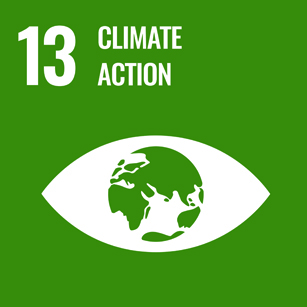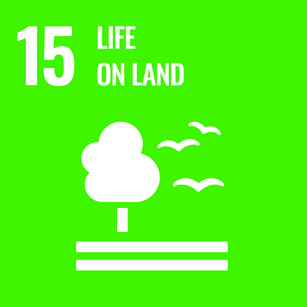Mangrove restoration in the Sunderbans
- Proposed areas of implementation
- Potential areas of implementation


India’s extensive coastline faces numerous threats from anthropogenic activities, including increased vulnerability to extreme climate events like cyclones and the impact of sea level rise due to climate change, which is exacerbating degradation caused by saltwater intrusion. Among the affected areas, India’s eastern coast, particularly the Sundarbans, the world’s largest contiguous mangrove forest, is highly susceptible to these natural and climate-induced impacts. Recurrent cyclones have led to a decline in mangrove cover, significantly damaging this fragile ecosystem. Moreover, anthropogenic pressures such as over-fishing and settlements pose additional risks to the Sundarbans.
To address these critical threats, Sustainable Environment and Ecological Development Society (SEEDS) has been actively working in the region to restore mangrove ecosystems to enhance the resilience of forest fringe communities and provide them with alternative livelihood opportunities. Mangrove plantations are crucial in reducing wind speeds, limiting saltwater intrusion, preserving biodiversity, and sequestering carbon dioxide, contributing to climate change mitigation and adaptation efforts. Additionally, the use of vetiver grass helps prevent soil erosion and maintain land integrity, which is essential for protecting the coastline and surrounding ecosystems.
Building on previous learnings and long-term experience in the region, SEEDS plans to expand the project to new locations within the Sundarbans. The project also places significant emphasis on improving livelihood opportunities for local communities. This includes training self-help groups in producing marketable items like handicrafts, furniture, or essential oils. Furthermore, SEEDS aims to establish nurseries for mangrove saplings and promote beekeeping for honey production, thereby providing sustainable income sources for the communities.
Through these integrated efforts, SEEDS seeks to restore and conserve the Sundarbans mangrove ecosystem while improving local communities’ socio-economic well-being. This holistic approach to conservation, climate action and livelihood development is essential for achieving long-term resilience and sustainable development in the region.
Context
The Sundarbans, the world’s largest contiguous mangrove forest, is part of the Ganga-Brahmaputra delta, covering 26,000 square kilometers and comprising 104 islands. This UNESCO world heritage site is classified as endangered on the IUCN’s Red List of Ecosystems due to its unique biodiversity, housing numerous endangered flora and fauna species, including birds, mammals, reptiles, fish, shrimp, crabs, and mollusks.
Approximately 4.37 million people depend on the Sundarbans for their livelihoods, engaging in activities such as fishing, shrimp farming, and the collection of Non-Timber Forest Produce (NTFP). However, this region faces various anthropogenic pressures and climate-related threats that have led to a decline in the distribution, quality, and diversity of the mangroves. Data from the India State of Forest Report (2021) indicates a reduction in mangrove cover from 1,038 sq km in 2011 to 994 sq km in 2021, representing a loss of about 4.4% over the past two decades. Poaching and the construction of unplanned embankments for settlements further exacerbate the challenges. The Sundarbans is also increasingly affected by environmental and climate-related events such as tropical cyclones, rising sea levels, siltation, and saltwater ingress.
With a coastline spanning 7,517 km, India is highly vulnerable to cyclones, experiencing nearly 10 per cent of the world’s tropical cyclones. The eastern coast, particularly the Sundarbans located in North 24 Parganas and South 24 Parganas districts in West Bengal, is particularly prone to cyclones. Recent cyclones, including Fani (May 2019), Bulbul (November 2019), and Amphan (May 2020), have caused significant damage, with cyclone Amphan resulting in the highest mangrove loss of 18.8%. These cyclones not only caused saltwater intrusion and increased salinity but also reshaped the mangrove shorelines, impacting their resilience against erosion and other external stresses.
Nature-based solutions are crucial in addressing climate risks in this vulnerable region, harnessing the power of natural processes to combat the challenges of climate change. Increasing the density of mangrove forests emerges as a viable and essential solution in the context of the Sundarbans.
Mangroves offer a range of benefits that contribute to climate change mitigation and support the livelihoods of coastal communities. They play a vital role in carbon capture and storage, potentially exceeding that of terrestrial forests by up to 10 times per hectare. Additionally, mangroves act as natural barriers against soil erosion and storm surges, while preventing saltwater intrusion and enhancing soil productivity. They provide essential food resources, promoting nutritional diversity and dietary intake among coastal communities. Mangroves also enable income diversification through the sustainable utilization of non-timber forest produce (NTFP), fodder, fisheries, and beekeeping. Notably, mangroves act as a protective buffer against cyclones. During cyclone Amphan in 2020, for example, wind speeds reduced significantly from 185 kmph to 130 kmph as the cyclone passed through the mangrove forests before reaching the state capital, Kolkata.
Recognising their vital role, governments have been actively promoting the conservation and plantation of mangroves. The Mangrove Initiative for Shoreline Habitats and Tangible Incomes (MISHTI), announced by the Government of India in February 2023, has provided a significant boost to mangrove plantations, with a focus on coastal areas and saltpan lands. While state-level actions are crucial, the Union Government’s announcement marks a welcome step towards large-scale mangrove plantation and restoration efforts.





Problem statement
With its vital ecological functions as a storm barrier, coastal stabilizer, and sanctuary for diverse flora and fauna, the Sundarbans faces significant threats due to anthropogenic activities. In addition to climate change, these pressures include land use changes, industrial activities, pollution, unmanaged tourism, poaching, illegal settlements, and the felling of mangrove trees, all of which jeopardise the integrity of this unique ecosystem.
Specific challenges faced by the Sundarbans include:
The Sundarbans are highly vulnerable to the impacts of climate change, including rising sea levels, temperature fluctuations, and intensified tropical cyclones and storms. These changes disrupt the ecological balance, impact the local food system, and pose risks to communities reliant on natural resources. The total area of the Sundarbans has declined by 210 km2 since 1967 and 451 km2 since 1904, as of 2015-16, with the primary driver being the accelerated rise in sea levels, exceeding the global average by more than two-fold.
Deforestation, agricultural activities, and urbanization have led to the degradation of the natural habitat and loss of biodiversity in the Sundarbans. This loss of resilience reduces the ecosystem’s ability to withstand extreme weather events and natural disasters. Additionally, overexploitation of resources, including fish, timber, and non-timber forest products, further exacerbates the degradation of the Sundarbans.
The Sundarbans, a remote and relatively underdeveloped region, lacks access to basic services such as healthcare, sanitation, and education for communities residing there. These communities often struggle with chronic poverty and have limited adaptive capacity to cope with natural disasters. Increasing human-wildlife conflicts in the region not only endanger lives but also negatively impact the livelihoods of communities dependent on natural resources.
Goals and objectives
The project’s goal is to promote resilience to the adverse effects of climate change and land-use changes on lives, property, and livelihoods; while fostering economic growth and ecological conservation by:
- Expanding mangrove and vetiver grass plantations to create natural barriers that reduce the speed and impact of cyclones and storms in the Sundarbans area. This will contribute to carbon sequestration efforts, reducing greenhouse gas emissions and their impact on global climate patterns. The project combines these plantations to protect coastal communities, preserve biodiversity, and contribute to climate change mitigation and adaptation.
- Improving opportunities for local communities to diversify their livelihoods by providing training and equipping Self-Help Groups (SHGs) with the necessary skills to produce saleable items from vetiver grass, such as handicrafts, furniture, and essential oils. The project will also establish nurseries for mangrove saplings, which can be sold for plantation in various areas of the region. SHGs will be trained in beekeeping (apiculture) to promote honey production. These alternative income sources will reduce dependence on traditional occupations and enhance resilience in the face of natural disasters.
This will be achieved through the following:
- Reduce the impact of cyclones and storm surges on forest fringe communities by restoring the mangrove ecosystem in selected areas.
- Strengthen the capacity of community members to conserve and sustainably manage mangroves, while providing alternative sources of livelihood for women’s Self-Help Groups (SHGs).
- Stabilize the coastline and reduce erosion caused by storm surges, waves, and tides.
- Protect water quality by removing pollutants that run off during storms.
- Minimise coastal flooding by mangroves acting as a natural sponge that absorb excessive water during heavy rains and storm surges.
- Create habitats for commercial fish and shellfish, by mangroves acting as a nursery and contributing to the income sources of the local community.
- Protect endangered species of fauna and flora.
- Provide shelter for honeybees, thereby supporting their population and promoting pollination.
- Provide a nesting ground for coastal bird species during their seasonal migration, enhancing their breeding and conservation efforts.
About the organisation
SEEDS (Sustainable Environment and Ecological Development Society) is a not-for-profit organisation that enables every Indian’s right to a life of dignity, secure from disasters. It builds community resilience through practical solutions in the areas of disaster readiness, response and rehabilitation empowering the most vulnerable across Asia to build a better future. Since 1994, the organisation has worked extensively on every major disaster in the Indian subcontinent – grafting innovative technology on to traditional wisdom. It has reached out to families affected by disasters and climate stresses; strengthened and rebuilt schools and homes; and has invariably put its faith in skill-building, planning and communications to foster long-term resilience.
SEEDS is also India’s first agency to be verified on the parameters of the global Core Humanitarian Standards (CHS) – an international certification system for quality and accountability in humanitarian response. SEEDS has been awarded with the 2022 United Nations Sasakawa Award for Disaster Risk Reduction by the United Nations Office for Disaster Risk Reduction (UNDRR) and the Subhash Chandra Bose Aapda Prabandhan 2021 by the Government of India acknowledging the invaluable contribution and selfless service rendered in India in the field of Disaster Management.






